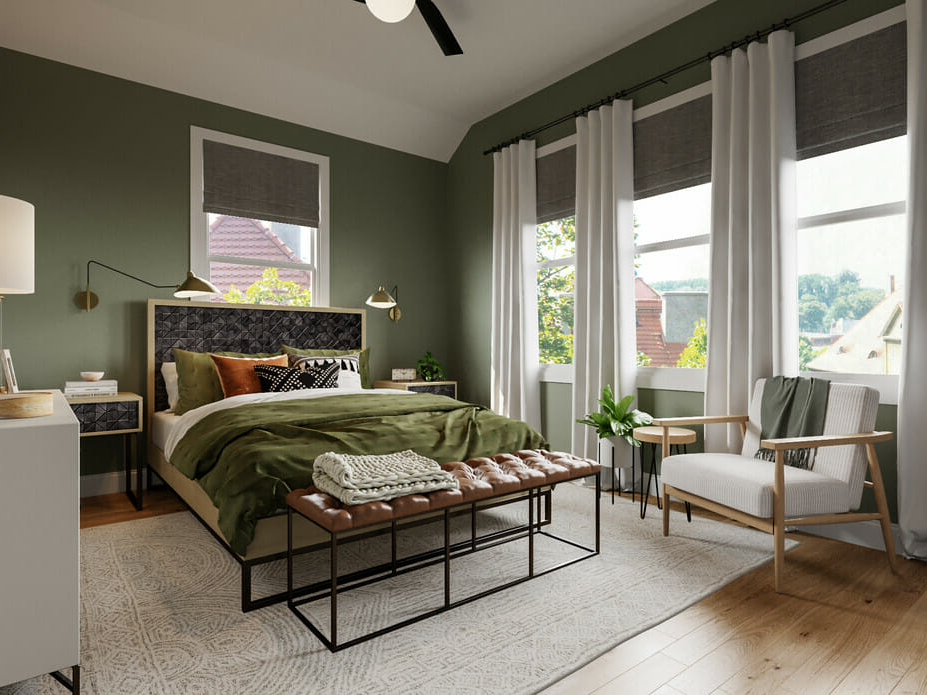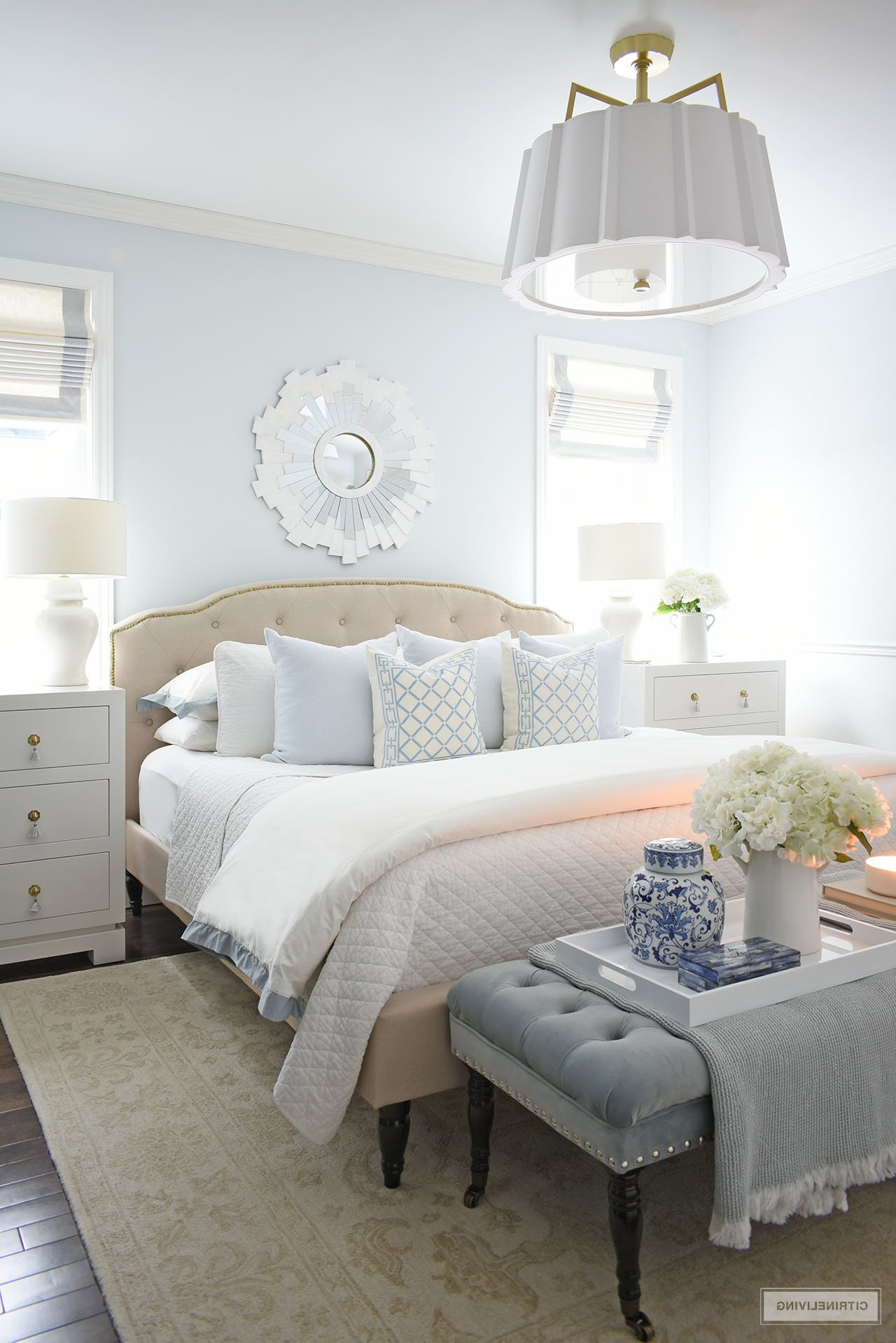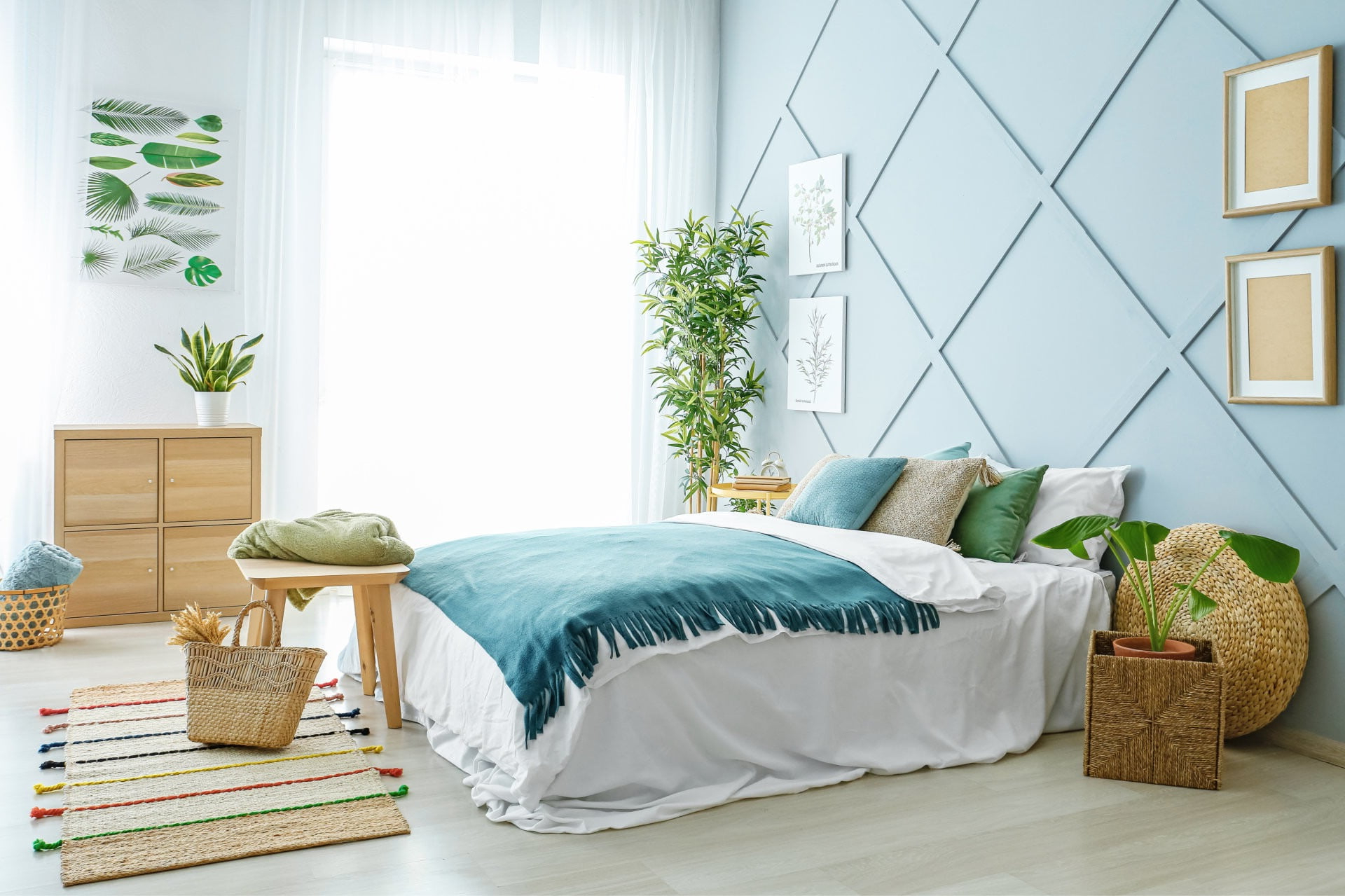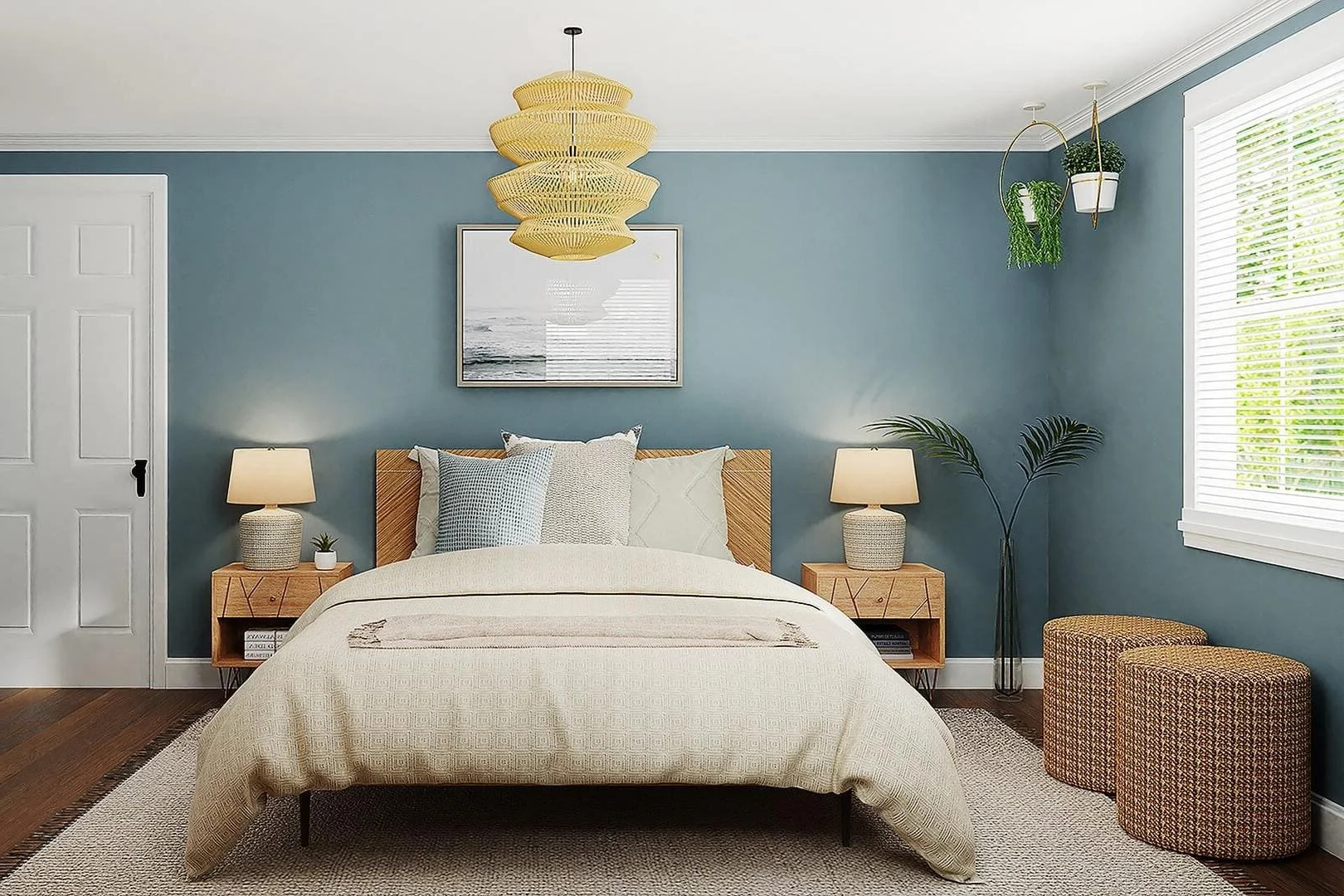We all want to sleep well, right? But sometimes our bedrooms feel like chaotic spaces that make it hard to unwind. What if I told you that creating a peaceful sleeping space doesn’t require spending a fortune? The magic happens in small changes that add up to big results. Whether you’re stuck in a tiny apartment or living in a house with limited budget, there are simple tricks that can completely change how your bedroom feels.
Picture this: you walk into your bedroom, and immediately you feel calm wash over you. The air smells fresh, the lighting is soft, and everything looks just right. That’s the power of a thoughtfully designed sleeping space. You don’t need to hire a designer or buy new furniture to achieve this feeling. Sometimes the best transformations happen when we focus on what matters most – how we feel when we’re in our space. Creating peace in your bedroom is about intentional choices, not expensive purchases. It’s about making your room a retreat that supports rest and recovery. Think about the last time you had a truly restful night. Was it in a fancy hotel room or in a space that felt familiar and comforting? Often, it’s the latter. This guide will show you how to make your bedroom feel like a haven without spending much money.
Start With the Basics: Lighting and Color
The foundation of any peaceful bedroom starts with light and color. Natural light during the day helps regulate your body clock, but as evening approaches, you want to dim things down. Consider adding blackout curtains or thickening existing ones rather than buying new window treatments. They block out outside light and create a cocoon effect. You can even use heavy blankets as temporary solutions. For artificial lighting, go for warm tones instead of harsh white lights. A bedside lamp with a soft bulb or string lights creates a gentle glow that signals to your brain it’s time to wind down. When it comes to color, stick with calming shades. Soft blues, muted greens, or warm neutrals work best for promoting relaxation. If your walls are bright and bold, try adding some neutral bedding or wall art to soften the space. You might be surprised how much a few carefully chosen pillows or a throw blanket can shift the entire mood of the room. These aren’t expensive changes, but they make a noticeable difference in how peaceful your space feels.
Declutter Your Mind and Space
A cluttered room often means a cluttered mind. This isn’t just a saying – research shows that physical mess correlates with mental stress. Before you even think about adding anything new, take a good look at what’s already there. Are there clothes hanging out of drawers? Is there a pile of magazines on your nightstand? Does your floor feel like a storage area? Start small. Put away items you don’t need right now. If you have a pile of clothes on your bed, move them to the closet. Clear off surfaces like nightstands and dressers. Sometimes we keep things because we think we might need them later, but often those items sit unused for months. Decluttering isn’t about getting rid of everything – it’s about keeping only what brings you joy or serves a purpose. When you’re surrounded by less, your brain gets a break from processing visual information. You’ll find yourself falling asleep faster and waking up feeling more refreshed. Remember, you don’t need to do this all at once. Set aside 15 minutes each day to tidy one small area. The key is consistency.
Sound Matters More Than You Think
Noise can be one of the biggest sleep disruptors. Even if you think you’re not affected by sounds, your brain is constantly monitoring for potential threats. If there’s traffic outside, a neighbor’s music, or even the hum of a refrigerator, your nervous system stays alert. You don’t need to buy expensive soundproofing materials to fix this. Try using white noise machines or apps that play gentle sounds like rain or ocean waves. These don’t eliminate all noise, but they mask disruptive sounds and create a consistent background. You can also make your own white noise by running a fan or using a humidifier. If you’re worried about disturbing others, consider using earplugs or noise-canceling headphones. Some people find that playing soft music before bed helps them relax. Just keep the volume low and choose calming genres like classical or nature sounds. The goal is to create a consistent auditory environment that makes it easy for your brain to transition into sleep mode.
Comfort Is King, Not Money
Your mattress and bedding are probably the most important elements in your bedroom, but you don’t need to spend thousands to get good quality. Start by checking your current setup. If your mattress is more than 7-10 years old, it might be time for a replacement. Look for signs like sagging, pain when sleeping, or difficulty getting comfortable. Instead of buying new bedding outright, consider what you already have. Can you add a new pillowcase or change your sheets? Sometimes a simple upgrade to a better quality sheet set can make a huge difference. Don’t overlook the importance of temperature regulation. If your room gets hot at night, try using lighter bedding or switching to bamboo fiber sheets. If it’s cold, add layers gradually. The right temperature for sleep is typically between 65-68 degrees Fahrenheit. You can also improve comfort by adjusting your sleeping position. Maybe you need a different pillow shape or a small bolster to support your neck properly. Sometimes a $20 pillow can be worth its weight in gold for better sleep.
Create Visual Interest Without Spending
Even the simplest bedroom can become interesting and peaceful with thoughtful visual elements. Artwork doesn’t have to be expensive. Print out your favorite photos or landscape images and frame them. You can even create a gallery wall using family photos or vintage postcards. Plants are another excellent investment for both aesthetics and air quality. Even low-light plants like snake plants or pothos can thrive in indoor environments. They also add life to a space and naturally purify the air. If you don’t want to deal with watering, choose succulents or air plants that require minimal maintenance. You can also make your own decorations using items you already have. Create a vision board with pictures of places you want to visit or goals you’re working toward. Hang it somewhere you’ll see it every morning. This can be a powerful reminder of what you’re working toward and can help reduce anxiety. Even something as simple as arranging books on a shelf in a pleasing way can transform how a room looks and feels.
Personalize Your Space for Maximum Calm
The most peaceful sleeping spaces are those that feel uniquely yours. What makes a place feel personal? It could be a special photo, a meaningful object, or even the way you’ve arranged your furniture. Start by identifying what makes you feel safe and happy. Do you love the idea of a reading nook? Then create one with a small chair and a lamp. Do you find peace in natural textures? Add some woven baskets or wooden decor. Your personal touches don’t have to be expensive either. A vintage bookshelf, handmade pottery, or even a collection of seashells can make a space feel like home. Consider the energy you want to create in your room. If you’re someone who needs to decompress quickly after work, maybe you want a space that feels immediately relaxing. If you’re someone who likes to plan ahead, perhaps you’d prefer a space that helps you organize your thoughts. The key is to align your physical space with your emotional needs. Sometimes the most powerful changes come from simply rearranging furniture to create a better flow or adding one item that brings you joy.
Establish Routines That Support Your Space
Creating a peaceful bedroom isn’t just about physical changes – it’s about developing habits that support rest. What happens in your room after you get ready for bed? Do you scroll through social media until late? Or do you have a routine that helps you wind down? A consistent bedtime routine tells your brain that it’s time to slow down. This might mean taking a shower, putting on comfortable pajamas, or doing a few minutes of stretching. You can also use your bedroom space for activities that promote calmness. Meditation apps, gentle reading, or journaling are all great options. The key is making your bedroom primarily associated with rest and relaxation. This means avoiding work-related activities, watching intense movies, or having loud conversations in your bedroom. When you train your brain to associate your bedroom with sleep, you’ll fall asleep faster and wake up more refreshed. Think about it – how many times have you found yourself unable to sleep because your mind is still processing the day’s events? A dedicated sleep space with clear boundaries can help you separate your daily activities from your rest time.
Make Small Changes Over Time
Transforming your bedroom doesn’t have to happen overnight. In fact, small, consistent changes often work better than big dramatic shifts. Start with one element that really bugs you. Maybe it’s the lighting, or perhaps the noise level. Address that issue first. Once you’ve made progress there, move on to the next challenge. This approach prevents overwhelm and gives you a sense of accomplishment along the way. You might notice that once you’ve added better lighting, you’re more likely to use your space in the evenings. Or perhaps when you’ve decluttered, you feel more relaxed in the morning. These small wins build momentum and encourage you to continue making positive changes. Keep track of what works for you. What adjustments actually make a difference in your sleep quality? Pay attention to how different elements affect your mood and energy levels. You might discover that certain colors or scents help you sleep better. The most successful bedroom transformations happen when you’re patient and pay attention to what your body and mind are telling you.
Creating a peaceful sleeping space is about intentionality, not expense. You don’t need to be wealthy to have a sanctuary that supports rest and recovery. Every small decision you make – from how you arrange your furniture to what sounds you play in the evening – contributes to the overall feeling of your room. The key is to start where you are and make gradual improvements. Focus on what matters most to you – whether that’s reducing noise, improving lighting, or simply making your space feel more personal. Remember that your bedroom should be a place where you can truly let go of the day’s stresses and prepare for rest. It’s not about perfection, but about creating a space that feels supportive and calming. The changes you make today can lead to better sleep tomorrow. So take a deep breath, look around your current space, and think about one small thing you can do right now to make it a little more peaceful. Trust that these simple steps will add up to a more restorative sleep experience.















